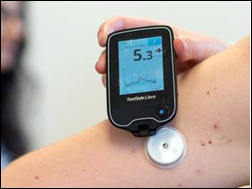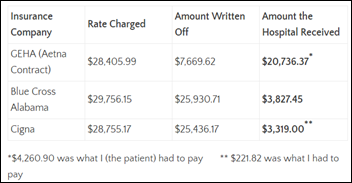Guillaume de Zwirek is founder and CEO of Well Health of Santa Barbara, CA.

Tell me about yourself and the company.
I founded Well almost precisely four years ago. My background is not in healthcare. I started my career as a classical musician. Then I worked at Google for four years, then afterward at a big data company that we sold to Amazon. I started a healthcare company because I found myself in a hospital one day and I was just so frustrated with my experience.
Well helps patients and administrators break free of antiquated communication practices. We provide a single command center that connects the many tools they use, transforming everyday interactions between patients and providers.
How can we be sure that hospitals will think about what the patient needs and wants instead of just blasting out self-serving, generic messages that focus on whatever benefits the health system’s bottom line?
I founded this company because I was disturbed by the amount of robo-spam that existed in healthcare. When I was at Google, I saw a transformation from web to mobile apps and then from mobile apps to messaging. That was happening right around the time I was leaving.
My experience in healthcare in 2015 was precisely what you are describing. Getting four to 17 messages, all saying the same thing that I can’t respond to, with no human on the other end. My only recourse is to call and wait on hold for 17 minutes. That to me is not customer service.
This is an industry that takes up the vast majority of GDP. On average, Americans spend $11,000 a year on their healthcare. A lot of that goes to insurance companies, but you would expect a bare minimum level of support in that environment. One thing I love to tell my team is, pick your favorite retailer — Nordstrom, Lululemon, you name it. Imagine if they were guaranteed $11,000 for every customer that walked in their door. What would they do? How would they treat their customer?
That’s how I like to think about healthcare, because I’m not from this industry. This is my first time in this industry. I encourage healthcare systems to think bigger and to go beyond the status quo. In an era where everyone is talking about AI, machine learning, and automation, we’ve gone in with a totally different approach. You have a phenomenal staff of people at your health system today. They just need the tools to be able to speak to your customers more effectively and make them feel human. It’s really concierge care, but in a way that is much more efficient for both parties involved.
My experience is that providers like to put up self-serving technology walls as a scalable alternative to paying humans to be available, so that if they can make money sending out robo appointment reminders to the potentially unruly masses without hiring people, that’s all they will do. How do you sell them on the idea that it’s OK to allow customers to speak with an actual human?
The problem is that the tools and techniques that are being used today aren’t effective. Look at the portal’s adoption rate across the industry. It’s abysmal. Ask every leading healthcare IT company about their numbers and what engagement looks like with patients. It’s not pretty.
When I was working at Google, my success and failure metric was, will a billion people use this? I was thinking about things on a different scale. I would have gotten fired for having 10 percent of people engaging with a release that I made. That to me is the framework that healthcare should be thinking about when they’re thinking about technology.
The reality is that you’re only going to engage people when you treat them the way they want to be treated. For texting especially and for messaging, I was seeing a very disturbing pattern. I didn’t want texting to become the new email.
For me, that meant putting humans behind the scenes. An even more important piece was connecting all the pieces. I’m going to divert from your question a little bit, but I’d like to speak to a trend that happened 15 years ago with the EMR and the EHR. This concept where health systems had bought a lot of best-of-breed technologies and all the data was sitting in different silos. The EMR comes around and all the data comes together in one place. Obviously the government fueled this, but there was a deliberate effort by health systems to piece everything together into a central database. Epic and a bunch of others did a great job here.
When I talk to health system executives, I give the same pitch for communications. We’re in a period in time where customer loyalty, customer retention, and building a long-term relationship with patients are critically important. You will never be able to do that if you have 100, 200, 500 different healthcare IT vendors that are all trying to communicate with your patient independently.
I was talking to a health system executive three weeks ago who told me she has 1,000 vendors. One thousand. She did a journey map of her patients, and there was a situation where a patient can get 17 appointment reminders coming from different systems. That’s because the systems aren’t playing nice together.
A big part of this is the educational piece. My pitch to health systems execs is think about communications the same way you thought about data 10 or 15 years ago. Everything needs to be routed centrally. You need to have live agents on the other side to help patients when there’s a need for service recovery.
Health systems like the idea of patient engagement even if they don’t fully understand or embrace what it means. Are they talking to patients about what they want and how they want to receive it?
I’m encouraged by the fact that over the past few years, this position of chief patient experience officer or patient access has become pretty prevalent across health systems. I’m encouraged by the fact that health systems are hiring leaders from outside of healthcare.
Product design and customer research in healthcare is probably lagging behind other industries. A lot of that has to do with the fact that healthcare has acted a lot like a monopoly over time. It’s hyper-local. There might be only a few health systems. The insurance companies control the patients, where you go wherever your insurance company pays. A lot that is changing as patients pay more money out of pocket.
But healthcare for the longest time has had the makeup of a monopoly, just like cable companies and the government. Which is why when you look at customer service ranked by every industry, those are the three worst. They all have monopolistic tendencies.
As someone coming into healthcare from the outside, did it surprise you that unlike in nearly all other industries, we can’t really define who our customer is?
I’m fortunate that I wasn’t from healthcare and came to the industry with open eyes. I’ve learned a lot. Healthcare is complicated, and for good reasons. There are nuances with patients. A mother with three chronic conditions in a rural area is going be very different than a high-tech Silicon Valley yuppie. There’s a lot of merit to healthcare being more complicated. It is a really, really hard challenge.
We’re still in the early days of figuring out what a patient engagement strategy means. Health systems are thinking through individual problems. Let me tackle scheduling and registration, eligibility, or telemedicine. We should be taking a step back and thinking about how we can help patients of all these different backgrounds navigate their unique patient journeys. That’s where it comes back to communications for me. That’s where I’ve been laser focused over the past four years.
Is it difficult to get that rational argument heard above all the noise that tends to buzz around healthcare IT?
That’s one part of it that is sad. The most effective way we’ve found to sell is come in and rip and replace legacy systems, the robo-dialers and robo-spammers that every health system has today that send out those appointment reminders that patients love to hate. Then, hopefully, to use that as our Trojan horse to start developing a strategic relationship with the executives and help them understand how they can map out the end-to-end journey, put agents behind this, and offer an unparalleled experience. But that’s the hard part. It’s unfortunate that that’s the way in.
But I’m also pragmatic. I realize that this is a complicated industry with a lot of competing initiatives. Every health system is doing a double Epic upgrade and and CMS is changing their rules left and right. I understand the nuances and the complexities. It was definitely a surprise for me, and one of the sadder things for me, that we have to start there and I can’t start with the full package. I can’t start by implementing this comprehensive, end-to-end solution that would change the way patients experience healthcare.
It’s baby steps. The jury is out over the next two to three years whether we can get people from that better robo-dialer experience to a truly integrated communications journey for patients.
In the absence of a chief experience officer or chief patient officer, who makes your case internally?
It depends on the health system and where the pain is felt the most. Sometimes it’s IT that is so frustrated with the way that their systems run today. In our world, it’s batch files at night that sometimes go wrong. Patients get the wrong messages and they end up filing support tickets and waiting three weeks. That is when IT feels a lot of pain.
Sometimes it is operations. You’ve acquired health systems, brought on new doctors, exited doctors, and you’re having to manage this entire operational side that is just becoming too time-intensive with existing technologies. That is typically where we are selling.
What is more interesting to me as we move towards risk is thinking about how we could potentially sell on the financial side, to the CFO, to the CMO, to the CNIO. People who realize that keeping patients out of the ED, keeping patients healthy, keeping patients adhering to the protocols that they want them to has long-term impact on their bottom line. That’s where I’d like to see things go. The message will resonate more. But we are still trying to figure out how to sell our message to that group.
How should a startup work with an accelerator or incubator?
You have to go in with a clear goal and objective. We went through an accelerator that was done in partnership with Techstars and Cedar-Sinai. When we accepted the offer to join that accelerator, our goal was to rip and replace their legacy reminder vendor. That was my only goal, my team’s only goal, for the four months that we were there.
We knew that if we succeeded, it would have been worth every minute we spent there. If we failed, we would have learned a lot about how to sell into healthcare, large health systems, and the nuances of workflow. We were successful, but even if we hadn’t been and we had learned those lessons, it would have been time well spent and we wouldn’t have been stuck in this endless pilot phase. I recommend not doing free pilots.
When it comes to accelerators with health systems, I’ve been disappointed to see some of the new accelerators that have come out that try to charge startups money to join. It’s so hard to start a company and be an entrepreneur, especially a first-time entrepreneur like myself, and if we’re going to encourage innovation in healthcare, we need to encourage companies to come to our health systems and spend time with us. We should pay startups if we can. If we want a pilot of their technology, we should pay them, because it costs a startup money to get something running.
The most important thing is that they learn, and they learn quickly, is that the killer of all innovation is time. You can’t buy time. You can’t make time. You have to move as quickly as possible.
We say in health system IT that nobody in the organization is empowered to say yes, but everyone is empowered to say no. Do you find that you need someone to go to bat for you?
It is better to get a quick no than a maybe. I learned this in raising venture capital money. I’ve raised over $14 million and I learned this lesson the hard way many many times. It is way, way better to get a no than it is to wait for months and months and months for a maybe.
The way we did it specifically when we went through the accelerator is that I just asked for meetings. I had a list of 56 practice administrators who had some sort of decision-making authority over the system they had in place. People are normally happy to introduce you to other individuals, especially entrepreneurs and people who are trying to introduce innovative technology. I went into those 56 meetings with an open mind, but a very very clear goal. I got great feedback and refined my pitch, and at the end of the day, I had 50 people who said, I would pay you for this.
I went to the CIO of this health system and said, I’ve got a bunch of contracts. I think you owe me a few million dollars. What do you think? And I got three pilots out of that. They paid me for the pilots, which was fantastic. But getting to no is sometimes a much harder feat than getting to yes, and it’s just as important.
Silicon Valley types often think they know everything and roll their eyes at any industry that they think is not using technology optimally. How did you develop an ability to avoid talking down to healthcare people in a way that would have made them less likely to want to work with you?
I had my foot in my mouth a few months into starting this company. I was trying to get into this accelerator and they thought we were blowing smoke around integration. I had never integrated before. It sounded really easy. I talked a really strong game around integration. They gave me a second chance to come in and have some humility, be honest about what we knew and what we didn’t know, and where we needed help. I’ve carried that lesson with me every single day since that experience, and that was almost three years ago.
At the core, what keeps me honest is that I’m a patient. All I want is to make things better. I want going to the doctor to be as easy as meeting up with a friend for coffee. I recognize that there is way more complexity than patients ever realize. If I can seek to understand that complexity and partner with health systems to figure out the right solution to making that seam invisible and frictionless to patients, then that’s a win. It doesn’t matter how long it takes. I just need to find the right partners who are willing to get creative and co-develop with us.
That’s where I’m having some of the most fun. Learning with health systems, understanding the challenges, getting curious, and at the end of the day, just trying to make the experience of healthcare something that’s as enjoyable as calling an Uber.
What are the most relevant lessons you learned while working for Google?
There are two lessons that came from the company after Google. I was at a company called Graphiq that now powers a lot of the technology behind Amazon Alexa. The founder there is Kevin O’Connor, a serial entrepreneur. He founded a company called DoubleClick that runs most of the display advertisements on the Internet.
I learned two concepts from him that I’ve carried with the company. The first is the concept of test-fail-learn, test-fail-learn, test-fail-learn, test-succeed, and then scale the crap out of the things that work. We do a lot of testing. We are very, very focused on analytics. We want data from our customers. We want to give them the data we have. When things aren’t working, we want to pivot.
I’ll give you an example. Early on, we thought that we could launch a health system-to-patient communication solution and also launch a clinician messaging solution at the same time. We failed miserably. I realized within two days of launching a solution that that was such a hard and complicated problem that there needs to be companies dedicated to that solution. Companies like Vocera and TigerConnect do that. That’s just one example of me learning and the test-fail-learn, test-fail-learn mantra.
The other one is this concept of scalable opportunities. Looking at the market, thinking about the things that really excite us but that we don’t really know how to solve yet, and assigning people to those initiatives just so that they become experts in them. As we figure out ways that we might be able to plug into these trends, testing solutions. For us, those are things like the payer landscape and value-based care. There are seven other items that sit on our whiteboard that no one’s actively working on, but we have one person on the team dedicated to thinking about them. One day they might find their way into our product and into our solution. But they are very much pie-in-the-sky ideas, scalable opportunities that we might choose to introduce to our company one day.
As a healthcare newcomer, what did you think of the HIMSS conference?
There was a lot going on. My heart goes out to anybody making purchasing decisions in healthcare. There are so many choices, there is so much noise, there is a lot to make sense of. In my opinion, it doesn’t look like there are clear winners in any category. Walking the, whatever it is, one mile or two miles of the exhibit floor is a clear example of that.
We knew that we had to have a decent presence at HIMSS for people to take us seriously. We went to HIMSS with two goals, to build vendor relationships and to meet with our existing clients and to meet with prospective clients while they’re all under one roof. I was happy with our performance and being able to achieve those goals, but it is a noisy space. I don’t have any solutions around how to make sense of the noise. I guess as a vendor, trying to be louder and trying to prove more value in a way that people hear who are making those buying decisions.
Do you have any final thoughts?
I’m having more fun than I have ever had in my career, and I’m 12 years into my career. I’m sure you’ve heard this from people many times in the years you’ve been writing HIStalk, but I believe that we are at a juncture in healthcare. I believe that patients feel empowered. I am encouraged by many of the new companies coming into healthcare. I am so encouraged by health systems that are opening up their doors to companies like ours, to help them learn and to help them bring new technologies to market. I am hopeful that investors will continue putting money into healthcare IT and that they will see big successes that keep fueling development in healthcare.
At the end of the day, my personal goal is to flip the status quo, in which healthcare is in the bottom three industries in terms of customer service. In my humble opinion, it should be number one.
We have a long journey ahead, but there’s a lot to be encouraged by and excited about. It’s people like you, investors, health systems, and frankly, companies coming into the space and even competitors of ours. So I really thank you for taking the time to speak with me and for seeking me out. It’s people like you who are helping drive this industry forward the ways it needs to be driven forward. I’m very appreciative.
Comments Off on HIStalk Interviews Guillaume de Zwirek, CEO, Well Health





















































The CEO sentenced to jail for massive healthcare fraud will get pardoned in a week.